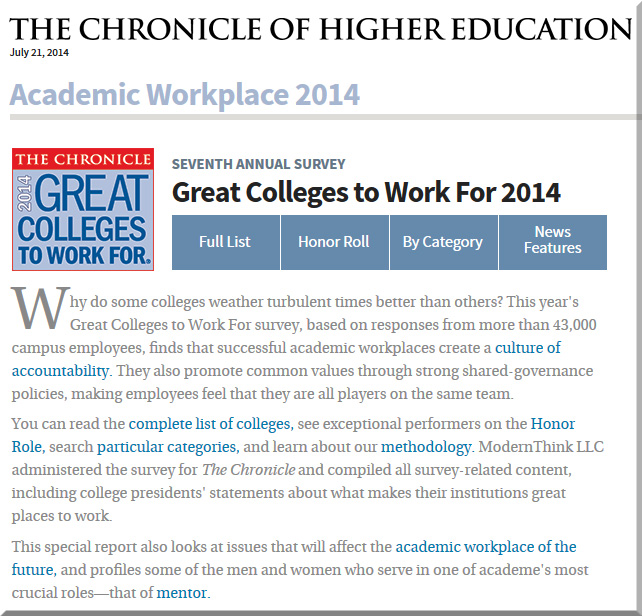Also see:
- The Uncertain Future of Academic Work — from chronicle.com by Audrey Williams June
Now more than ever, people employed in higher education face the forces of change
Excerpts:
Over the next several years, at least, new technologies are expected to drastically reshape the way professors teach, and when and where people on college campuses do their work.
…
For those who do end up in the academic workplace, how to best use technology in teaching and scholarship will be a challenge for the foreseeable future. Although massive open online courses, or MOOCs, are hot topics of conversation, even professors who have never taught online have seen the effects of technology on their work lives.
Some advice from Ms. Austin to graduate students who want to be professors: Get experience teaching online.
“You’ll be expected to teach fully online and to use technology quite skillfully in class,”says Ms. Austin, who has taught all-online courses in the College of Education’s online master’s programs.
As for senior faculty members, “we can’t just stay up on what’s happening our fields, but we have to stay ahead of the technology as well,”*** Ms. Austin says. “It’s more than just learning some technology. We need to think about it in the context of what are the most effective ways of helping students learn.”
…
“If you look to the future, it’s really going to be necessary for faculty to have a good degree of flexibility,” Ms. Austin says. “They’ll need to be flexible enough to use new technology, flexible enough to respond to the changing student body. Appointment types are changing.
“Flexibility is going to be key.”
*** From DSC:
Though I applaud what Ms. Austin is saying throughout this solid piece, I don’t see faculty members being able to stay ahead of the technology as well as staying up on what’s happening in their fields. Even keeping up with (vs. being ahead of) the technology is something that even Educational Technologists struggle to accomplish! Given limited resources as well as the pace of change, it’s very difficult, if not impossible to achieve such a feat. This is why I think TEAM-based content creation and delivery will be the predominant setup in the future.









